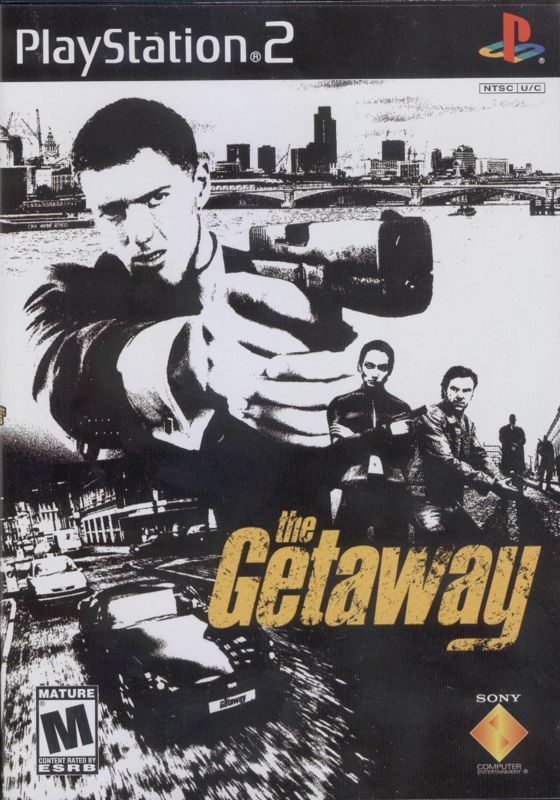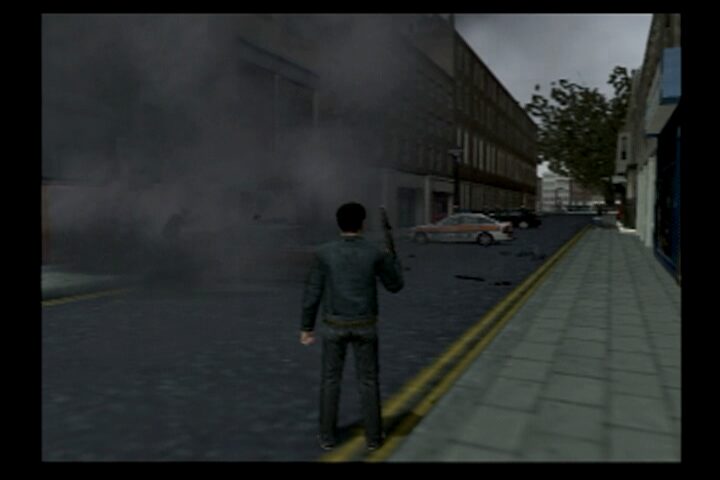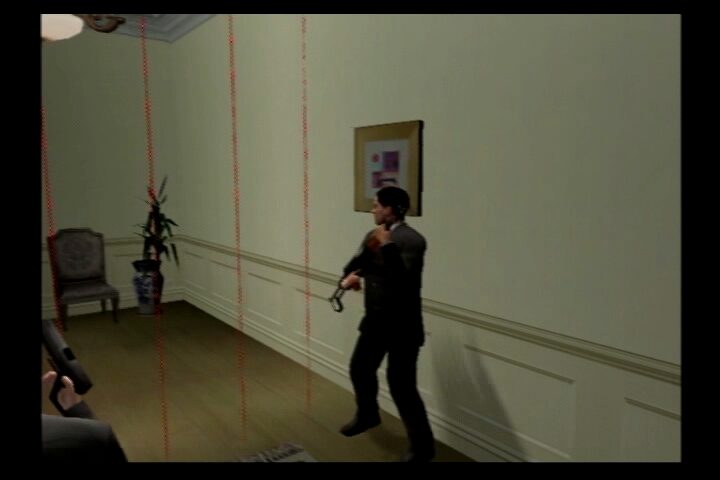Retro Replay Review
Gameplay
The Getaway offers a tightly scripted experience that blends high-stakes driving and third-person shooting into one cohesive package. From the opening mission, you’ll find yourself behind the wheel of a speeding car through London’s streets, chased by enemies who won’t hesitate to ram you off the road. These sequences are often under time constraints, forcing you to balance reckless speed with careful navigation—run too many red lights or smash into obstacles, and you risk mission failure almost as swiftly as getting caught by the police.
Once you reach your destination, the action shifts seamlessly to on-foot combat. Unlike many open-world titles where you can wander aimlessly, The Getaway’s missions steer you from shootouts in narrow alleyways to tense stealth segments in abandoned warehouses. Your avatar, Mark Hammond, can crouch, sneak, and even take hostages—adding layers of strategy to gunfights. Weapon selection matters too: you can carry either two small arms or one larger weapon, so you’ll need to think ahead about ammo reserves and range requirements.
One of the game’s standout features is its linear progression. Each mission dovetails perfectly into the next, mirroring the unfolding narrative. You won’t stumble upon random side quests or collectibles; instead, you’ll be laser-focused on completing the next objective to rescue Mark’s kidnapped son. For players who enjoy a robust storyline without getting sidetracked by optional distractions, this design delivers a streamlined, cinematic thrill ride.
In addition to Mark’s gripping campaign, The Getaway unlocks a second storyline starring Frank Carter, a dogged vigilante cop. His missions run parallel to Mark’s, providing fresh viewpoints on events you’ve already experienced. This dual-narrative structure keeps the gameplay feeling varied and gives a sense of a larger criminal world in flux, as you switch between heartbreak-driven objectives and justice-hungry pursuits.
Graphics
Visually, The Getaway’s most impressive feat is its recreation of London. Every red telephone box, cobblestone lane, and illuminated borough sign appears meticulously modeled, giving the game an unmistakable sense of place. Even if you’ve never visited the British capital, you’ll recognize iconic landmarks like Tower Bridge and Piccadilly Circus, rendered with an attention to architectural detail that was groundbreaking at release.
The character models and animations further heighten the immersion. Facial expressions shift realistically—Mark’s jaw tightens in anger, his shoulders slump under the weight of grief—and combat moves look fluid whether you’re rolling behind cover or reloading a shotgun. Blood spatters on clothing and the way Hammond staggers when injured are subtle visual cues that replace traditional health bars, reinforcing the game’s “no interface” philosophy.
Cutscenes are presented in engine rather than pre-rendered movies, providing seamless transitions between gameplay and story moments. This approach keeps you in the driver’s seat, so you’re never yanked out of the action to watch lengthy cinematic sequences. Textures, lighting, and weather effects—rain-slicked roads or foggy nighttime chases—combine to produce a gritty, noir-ish aesthetic that suits the tale of revenge and betrayal perfectly.
Story
At its core, The Getaway is a vengeance saga fueled by loss and desperation. Mark Hammond, once a feared gangster, has forsaken his old life to protect his wife and young son. But when ruthless crime lord Charlie Jolson coldly murders Mark’s wife, frames him for the crime, and abducts his child, the stakes become devastatingly personal. You’re not just playing missions—you’re guiding a father’s harrowing descent into a criminal underworld he swore he’d left behind.
The plot unfolds in brutal, no-holds-barred fashion. Jolson’s ultimatum is chilling: either carry out deadly assignments against rival syndicates or watch your son die. Each mission amplifies the moral quandary—do you risk everything to hit a rival safehouse, or tearfully bow out and sacrifice hope of rescue? This narrative tension lends weight to every bullet fired and every getaway driven, making each success feel like a small step toward redemption.
After wrapping up Mark’s journey, you assume the role of Frank Carter, a vigilante cop whose investigations intersect with Jolson’s empire. Carter’s storyline fills in gaps from Mark’s perspective, revealing hidden motives and secret alliances. This parallel narrative not only extends playtime but also enriches the world-building, showing that in London’s criminal labyrinth, no one is purely good—or purely evil.
Overall Experience
The Getaway delivers an unforgettable ride for players who crave a story-driven experience in an open-city environment. While you won’t find traditional side activities or sandbox freedom, the linear mission design ensures a concentrated dose of drama and action. From high-octane chases through narrow streets to tense gunfights in shadowy warehouses, the game maintains a relentless pace that rarely lets up.
Its distinctive lack of on-screen HUD makes for an immersive playthrough, though it can be a double-edged sword: newcomers may find the blinking-navigation lights disorienting at first. Likewise, the tight vehicle handling demands patience—ramming a bus off course could mean mission failure rather than comic relief. But once mastered, these systems reward skillful play with a genuine sense of accomplishment.
Between the powerful storyline, authentic depiction of London, and genre-blending mechanics, The Getaway stands out as more than just another GTA clone. Its emotional depth, dual protagonists, and raw atmosphere deliver a compelling package that resonates long after the credits roll. For fans of crime dramas and cinematic action, this game remains a must-play chapter in the history of narrative-driven open-city adventures.
 Retro Replay Retro Replay gaming reviews, news, emulation, geek stuff and more!
Retro Replay Retro Replay gaming reviews, news, emulation, geek stuff and more!









Reviews
There are no reviews yet.